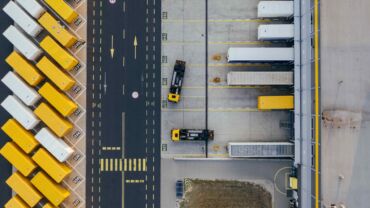When the United Kingdom (UK) officially implemented its Brexit plan and withdrew from the European Union (EU) on January 31, 2020, the UK and EU entered into an eleven-month “transition” period, the main purpose of which was to negotiate a free trade agreement (FTA) between the two parties. Finally, on December 24, 2020, the UK and EU announced that an agreement had been reached allowing originating goods to continue to flow under duty and quota-free conditions after the Brexit transition period ended on December 31, 2020.
For businesses and multinationals doing business in or with the UK, Brexit has created an avalanche of trade compliance complications.
A new tariff regime: The UKGT
One of the main goals of Brexit was to give the UK a clean slate to renegotiate its trade relationships around the world unencumbered by its current obligations to the EU. Toward that end, in May the UK announced its own new tariff regime—the UK Global Tariff (UKGT)—which applies to goods imported into the UK after January 1, 2021.
In theory, the UKGT reduces and simplifies tariffs on thousands of goods entering the UK and removes tariffs entirely on certain raw goods and other products deemed beneficial to UK businesses. On the other hand, many goods that used to be traded duty-free between the UK and EU could actually be subject to higher tariffs. The new tariff regime may raise the cost of certain goods for UK importers and also increase the administrative costs of complying with new rules and classification codes.
Manually updating and maintaining new classification codes and duty rates is a time-intensive and risk-inducing process. Classification software remains the simplest and most effective way to ensure accurate product classifications and avoid incorrect duty payments.
Post-Brexit trade compliance and supply chain concerns
Ever since Brexit was approved in 2016, it has been the source of an alarming amount of uncertainty, particularly in the business community. Afraid of the consequences, many multinationals—e.g., Panasonic, Sony, Honda, Dyson, Barclay’s, HSBC—moved their European headquarters out of the UK or took measures to limit their risk exposure.
Many UK industries (e.g., in automotive, technology, retail, manufacturing, and agriculture) are deeply intertwined with the EU and have been for decades. Taken as a whole, the EU is the UK’s largest trading partner, accounting for 43% of all UK exports and 51% of all UK imports in 2019.
Consequently, companies with EU-centric supply chains may have to find alternative suppliers or establish new trade routes through different countries. As a result of the current UK-EU agreement, they now face new customs realities for cross-border transactions. Starting January 1, 2021, goods moving between the UK and any EU country will need to file import and export declarations, as well as calculate the origin of their goods. As characterized by other FTAs, traders will have to calculate Regional Value Content (RVC), and product-specific percentages must be followed. This is a considerable departure from the free circulation of goods between the UK and EU before Brexit.
Companies doing business in or with the UK will need to invest in personnel and technology to fill the need for time–consuming, complex rules of origin calculations. These calculations are vital if they wish to receive duty-free status for their originating goods under the new agreement.
Although the UK has successfully secured several independent FTAs so far, companies shouldn’t assume other FTAs will be negotiated just as easily. Considering that the average trade agreement takes two to three years to negotiate, it could be years or even decades before the UK’s trade relations stabilize.
Companies with footprints in countries where existing agreements haven’t rolled over must understand the cost implications. Businesses will need to stay up-to-date on new regulations rolling over from current and new FTAs, and run rules of origin calculations for each FTA with its own calculation method in order to navigate these changes.
In the meantime, the impact of Brexit on global trade over the next one to three years is likely to result in:
- Higher prices for many goods and services
- Increased import/export costs
- Higher taxes (cross-border trade, transfer pricing, direct/indirect taxes)
- Border and customs disputes
- Supply chain shortages and disruptions
- Shipping delays or stoppages
- Business resource allocation issues
- Continuous business challenges of all kinds
Meeting the Brexit challenge
Given the ongoing uncertainty and fluidity of the UK’s global trade situation post-Brexit, corporate leaders are understandably concerned about their ability to manage their supply chains.
In fact, there is really only one way for trade compliance professionals to track and manage all the changes involved in the post-Brexit global trade landscape, and that’s through automated software solutions specifically designed and programmed to do most of the data-intensive heavy lifting.
This kind of technological assistance is key because it allows companies to take a proactive, forward-looking approach to trade compliance and supply chain management. Without the proper technological tools, companies can get caught in a reactive spiral that leaves them perpetually unprepared.
Companies that use Thomson Reuters ONESOURCE Global Trade software can:
- Track the origin of goods through multiple channels
- Stay up-to-date on tariff rates, sanctions, controls, and rules for 210 countries
- Run “what-if” scenarios to identify risks and quantify savings
- Accelerate import/export processes
- Automate customs declarations and other routine tasks
- Track and monitor supply chains in real time
- Calculate trade compliance costs and risks
- Maintain a dashboard of key performance indicators
- Make more informed decisions overall
Even in the best of times, managing a modern supply chain without the right technological tools is next to impossible. For companies caught in the crossfire of Brexit, the best defense is comprehensive global trade management software that can take the guesswork out of compliance and give managers the tools they need to adapt and succeed in our “new normal.”
Problems arising from Brexit can’t be ignored, but they can be managed—with the right technological solutions. Visit our Brexit resource hub to learn more.







